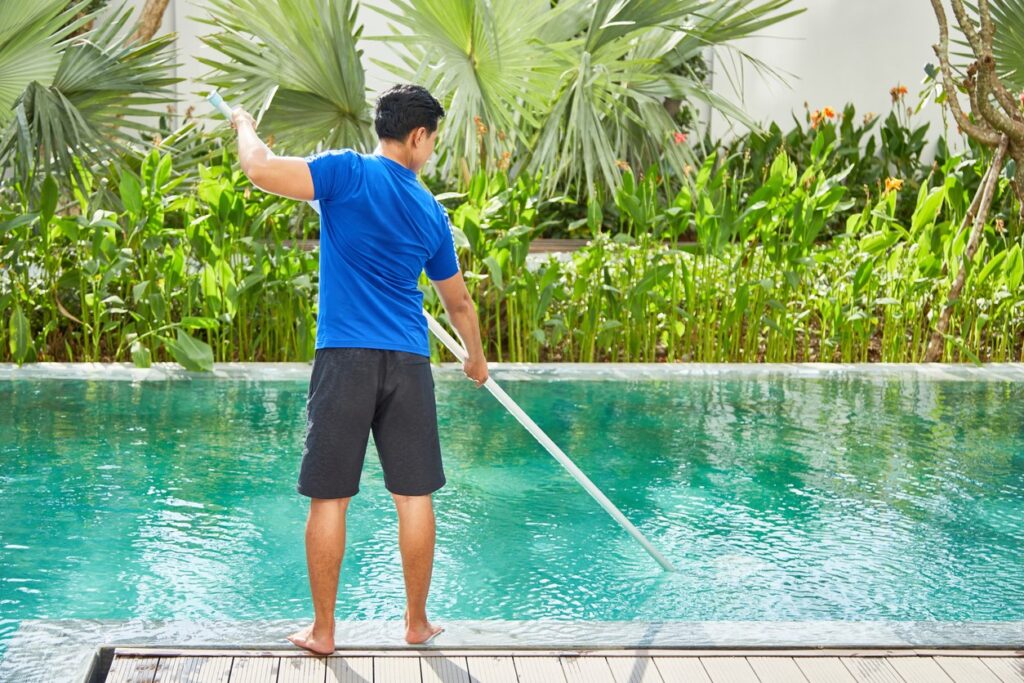
Top Pool Cleaning Mistakes That Could Be Costing You Money
Proper pool maintenance ensures water clarity, equipment longevity, and chemical balance. However, common cleaning mistakes can lead to costly repairs and excessive chemical use. Many pool owners unknowingly damage their pools by neglecting essential maintenance tasks or using incorrect cleaning techniques. Understanding these mistakes helps prevent unnecessary expenses while maintaining a healthy and enjoyable swimming environment. Ignoring minor issues can escalate into larger problems, requiring costly interventions. Even small debris left unattended can clog filters, strain pumps, and impact overall efficiency.
Algae growth, chemical imbalances, and improper equipment usage further contribute to unnecessary costs. Consistent monitoring, regular cleaning, and timely repairs prevent such issues from worsening. Pool owners who adopt proper maintenance practices experience fewer breakdowns and lower long-term expenses. Neglecting seasonal maintenance or delaying essential treatments results in higher repair costs and chemical inefficiencies. By staying proactive, pool owners maintain a cleaner, more balanced swimming environment without excessive spending. Implementing best practices ensures a well-maintained pool that remains in peak condition for years.
Neglecting Regular Pool Cleaning
Skipping routine cleaning is one of the most common cleaning mistakes that pool owners make. Debris accumulation, such as leaves, insects, and dirt, leads to poor water circulation and bacterial growth. When contaminants build up, they affect water chemistry, causing imbalances that require expensive chemical corrections. Regularly skimming the pool surface, vacuuming debris, and brushing walls prevent unwanted residue from accumulating.
Inadequate filter maintenance further compounds the issue. Dirty filters hinder water circulation, increasing strain on the pump and reducing filtration efficiency. A clogged filter forces the pump to work harder, leading to premature wear and higher energy costs. Cleaning or replacing filters as recommended prevents unnecessary strain and ensures optimal performance. Additionally, failing to backwash the filter at the appropriate intervals causes debris to clog the system, further reducing efficiency. Many pool owners forget to clean the pump basket, allowing debris to accumulate and restrict water flow. Proper maintenance of all filtration components not only improves circulation but also extends the life of the equipment, reducing repair and replacement costs.
Mismanaging Pool Chemical Balance
Failing to maintain proper chemical balance is another costly cleaning mistake. Pool water requires precise chemical levels to remain clear and safe for swimming. High chlorine levels cause skin irritation, while low levels result in bacterial growth. An imbalanced pH disrupts water clarity and corrodes pool surfaces. Testing the water frequently ensures proper chemical adjustments, reducing long-term damage and excessive chemical costs.
Many pool owners also overuse algaecides and shock treatments. While these chemicals help maintain water quality, excessive application can damage pool liners and filtration systems. Proper dosing prevents unnecessary expenses while maintaining effective sanitization. Storing chemicals improperly further contributes to inefficiencies, as heat and moisture degrade their potency over time.
Ignoring Equipment Maintenance
Overlooking pool equipment maintenance is a common cleaning mistake that leads to costly repairs. Pool pumps, filters, and skimmers require routine inspections to ensure efficient operation. Ignoring minor pump issues results in decreased circulation and higher energy consumption. Addressing problems early prevents costly breakdowns and extends equipment lifespan.
A malfunctioning pump forces the system to work harder, raising electricity costs and reducing overall efficiency. For instance, seeking professional assistance through Victorville pool pump repair services helps diagnose and resolve pump-related problems before they worsen. Investing in timely repairs prevents significant expenses and ensures uninterrupted pool operation.
Overlooking Pool Surface and Tile Cleaning
Failing to clean pool surfaces and tiles contributes to algae growth and scaling. Neglecting tile scrubbing allows calcium deposits and grime to accumulate, leading to discoloration and structural damage. Regularly brushing tiles and using appropriate cleaning agents prevent long-term deterioration, reducing maintenance costs.
Surface staining occurs when organic matter settles and interacts with pool chemicals. Leaves, sunscreen, and minerals cause unsightly stains that require extensive treatments. Addressing stains promptly minimizes restoration expenses while preserving pool aesthetics. Maintaining proper water circulation further prevents residue buildup along pool walls.
Using Incorrect Cleaning Tools and Techniques
Using the wrong cleaning tools is a costly cleaning mistake that damages pool surfaces and equipment. Harsh scrubbing brushes scratch pool liners, leading to expensive repairs. Automatic pool cleaners, if misused, may damage delicate surfaces, creating additional maintenance costs.
High-pressure washing damages pool plaster, increasing the likelihood of cracks and leaks. Gentle, consistent cleaning methods using recommended tools ensure effective maintenance without causing structural harm. Understanding the correct techniques prevents unnecessary wear and tear, reducing long-term expenses.
Failing to Monitor Water Levels
Inconsistent water levels affect pool equipment performance and chemical balance. Low water levels cause pumps to run dry, leading to overheating and potential damage. On the other hand, high water levels dilute chemicals, reducing their effectiveness and requiring frequent adjustments.
Checking and maintaining proper water levels ensures efficient circulation and balanced chemical distribution. Allowing excessive evaporation or overfilling the pool creates unnecessary maintenance challenges. Addressing water level fluctuations promptly prevents equipment malfunctions and additional chemical costs.
Underestimating Seasonal Pool Maintenance
Seasonal changes impact pool maintenance, requiring adjustments to cleaning schedules and chemical treatments. Neglecting seasonal maintenance leads to imbalances that increase long-term costs. Warmer months require more frequent sanitization due to higher bacteria and algae growth. Winterizing a pool without proper care results in damage to pipes, pumps, and other essential components.
Failing to cover the pool during off-seasons allows debris accumulation, requiring extensive cleaning before reopening. Proper seasonal maintenance ensures equipment longevity, chemical stability, and reduced overall expenses. Planning ahead prevents unnecessary repairs and keeps the pool in optimal condition year-round.
Avoiding these cleaning mistakes saves money while preserving pool integrity. Routine maintenance, correct chemical usage, and timely repairs prevent costly damages. Pool owners who prioritize proper care experience fewer breakdowns, reduced chemical expenses, and prolonged equipment lifespan. Investing in preventative maintenance ensures a consistently clean and efficient swimming environment, minimizing unnecessary financial burdens over time.






